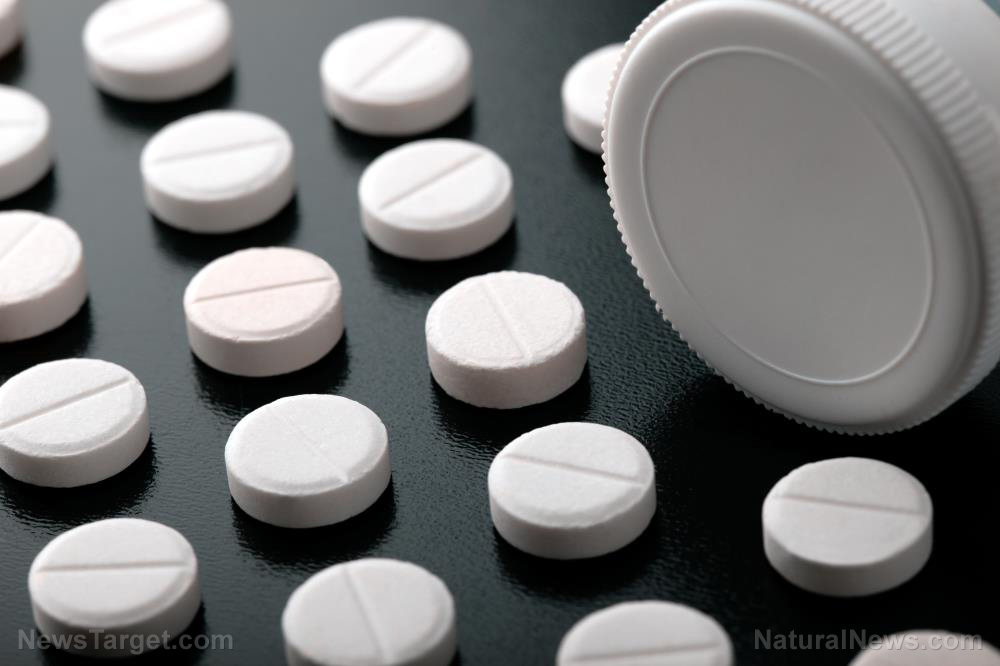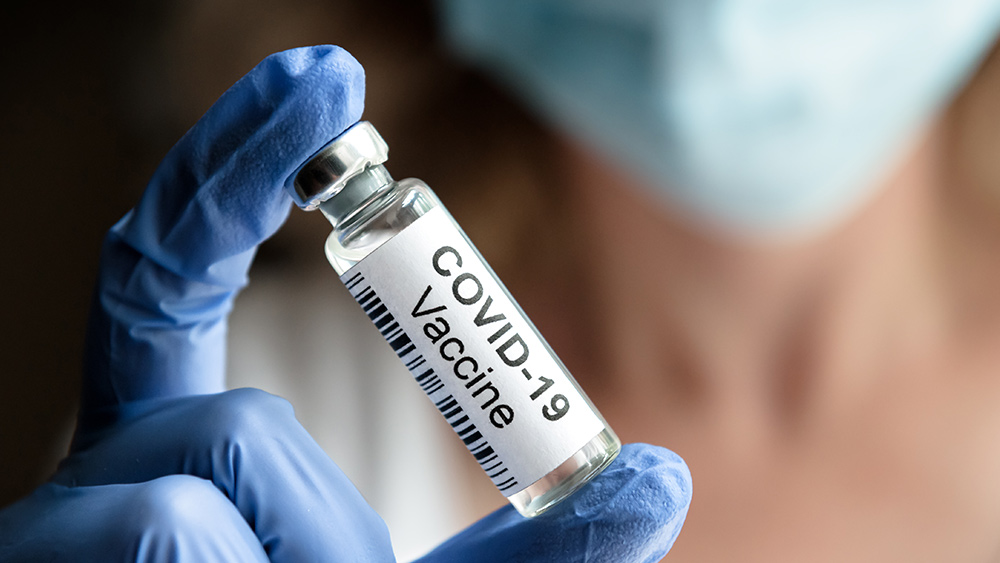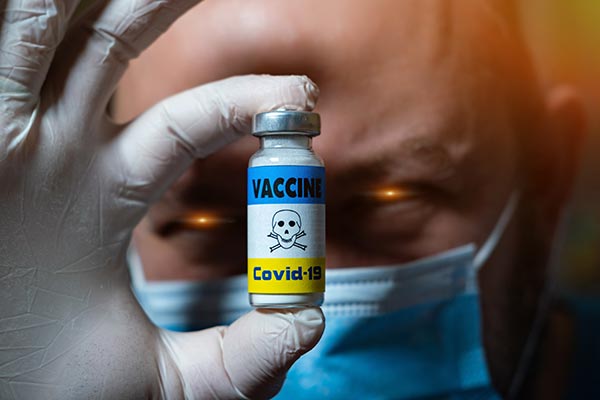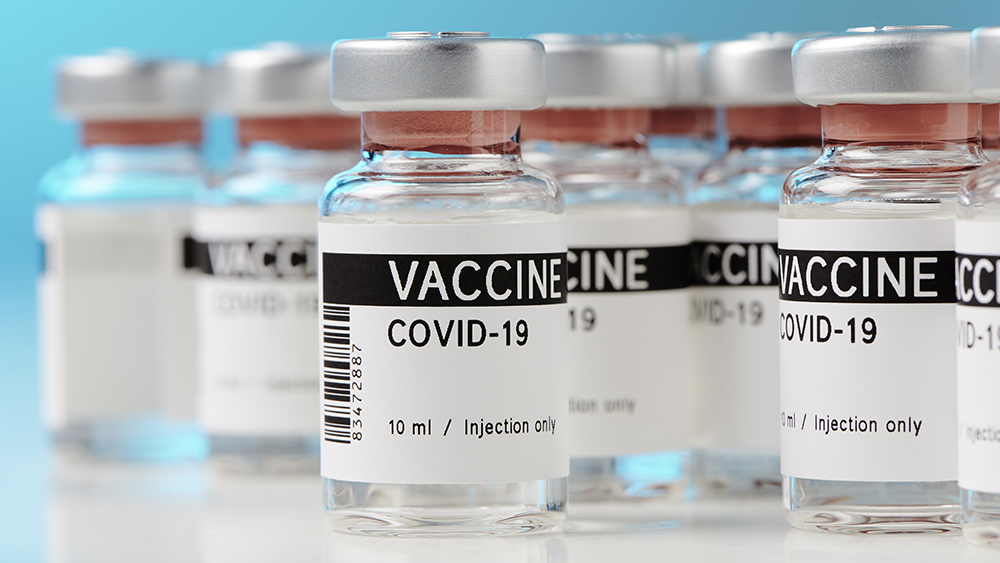CDC: Prescriptions for Adderall and other stimulant drugs SPIKED during the COVID-19 pandemic
04/18/2023 / By Zoey Sky

The Centers for Disease Control and Prevention (CDC) recently issued a report linking the Wuhan coronavirus (COVID-19) pandemic to an unusual spike in prescriptions for attention-deficit/hyperactivity disorder (ADHD) drugs, especially among young women.
The spike is part of a growing trend in the use of these prescribed stimulants. In 2022, more than 45 million prescriptions for Adderall alone were dispensed.
In October 2022, the Food and Drug Administration (FDA) announced an Adderall shortage that is still ongoing, with millions of Americans panicking as they switched medications. Some resorted to rationing doses because they can’t fill prescriptions, while others looked for replacement drugs on the black market.
Many young women have started posting on social media sites like TikTok to share their suspicions that the Adderall formula is being watered down due to the shortage.
According to an article by the New York Times, as of March 2023 videos related to the phrase “ADHD meds not working” have been viewed more than 15 million times on TikTok.
Users also encouraged their viewers to submit complaints to the FDA about what they think is a “new” Adderall being distributed and to call for the agency to run lab tests of the prescription medication.
Both the FDA and drug makers claimed that the shortage is due to the growing demand for the drugs.
Meanwhile, the CDC says the increased demand can be attributed to “increased stress during the COVID-19 pandemic, changes in guidelines for ADHD diagnosis” and an “increase in awareness.” The agency also thinks that the demand for Adderall has gone up due to increased access to prescriptions through telehealth because of ads placed on TikTok that target young adult users.
Some say that shifting cultural dynamics among young adults could have also played a role in increasing the demand.
Adderall is an amphetamine used for its stimulant effects. But it can also be used as a performance-enhancing drug, an off-label antidepressant or an emotional anesthetic. Some use Adderall for narcolepsy (daytime sleepiness).
Potential side effects of the drug can include:
- Changes in vision
- Decreased appetite
- Dizziness
- Headaches
- Increased heart rate
- Irritability
- Nervousness
- Problems falling asleep or staying asleep
- Restlessness
- Slowed speech
- Stomach aches
According to Katherine Dee, a contributor for Compact magazine, there is a subsection of the population fixated on what has been called “toxic positivity,” an excessive preoccupation with maintaining optimism no matter the situation. Some people use stimulants like Adderall to achieve that feeling.
On the other hand, there are also people who think supply-side issues are to blame for the shortage.
Another report said Teva Pharmaceutical Industries, a major producer of ADHD drugs, was struggling with a worker shortage. Other manufacturers are also reporting supply issues.
According to the FDA’s website, some manufacturers claim that the shortage is due to a demand increase or shortage of active ingredients. However, other manufacturers did not bother to list a reason.
Dr. Yoram Unguru, a pediatric hematologist and oncologist at Sinai Hospital of Baltimore who studies drug shortages, said in an interview that the pharmaceutical companies’ lack of transparency about the shortage makes it harder to resolve the supply issues.
Other reports suggest that supply is also affected by new “secret rules” that limit pharmacies’ ability to distribute controlled substances. These rules were allegedly the result of an opioid crisis-related settlement with three major drug distributors: AmerisourceBergen Corp., Cardinal Health Inc. and McKesson Corp.
The rules supposedly capped the number of controlled substances drug makers could distribute to pharmacies. But the amount of the caps themselves is kept under wraps because of the settlement agreement, which is enforced in an effort to stop pharmacies from being able to exploit the system.
Pharmacists also report that while prescriptions for controlled substances rise, the rules limit their ability to fill legitimate prescriptions. (Related: Amphetamine ADHD drug Adderall facing supply crunch, survey finds.)
Prescription stimulant on the rise, warn health experts
Between 2006 and 2016, prescription stimulant use more than doubled in America.
While prescription stimulants are sometimes used for health issues like narcolepsy, they are mainly used to treat ADHD, a neurodevelopmental disorder characterized by inattention and hyperactivity.
In a CDC study published in the journal Morbidity and Mortality Weekly Report, researchers evaluated insurance claim data to confirm the number of stimulant prescriptions filled from 2016 to 2021 for people ages five to 64. The data excluded people buying drugs out-of-pocket or with health plans not provided by an employer.
The results showed that the increase in prescriptions during the COVID-19 pandemic came after several years of increases beginning 2016. The trend corresponds with increasing rates of ADHD diagnoses in adolescents, adults and women.
Overall, the report showed that the percentage of enrollees with one or more prescriptions for stimulants has gone up from 3.6 percent in 2016 to 4.1 percent in 2021.
However, data from certain demographics are more conclusive.
The number of females age 15 to 44 and males age 25 to 44 filling stimulant prescriptions has gone up by over 10 percent from 2020 to 2021. The numbers also increased by almost 20 percent among females in an even narrower age range, 20 to 24.
Historically, ADHD has been defined as a childhood disorder more common among boys. But during the study period, stimulant prescriptions have decreased slightly among children.
For the study, researchers tracked stimulants sold under the brands Adderall and Dexedrine, and methamphetamine under the brand Desoxyn and methylphenidate under the brand Ritalin.
Predatory advertising on social media linked to a spike in drug use
The CDC’s report follows several articles also reporting similar numbers.
One report revealed that prescriptions for ADHD medications increased 19 percent on average between 2018 and 2022. Meanwhile, Adderall prescriptions have skyrocketed to over 30 percent within the same period.
According to Epic Research, a health analytics firm in Verona, Wisconsin, ADHD diagnoses among women ages 23 to 49 have nearly doubled between 2020 and 2022.
The drug has become popular among adults who recognized their ADHD symptoms later in life, including people who self-diagnose online, in most cases using online tools created by telehealth providers.
During the COVID-19 pandemic, Telemedicine grew in popularity because many people could not schedule regular doctor visits.
Unfortunately, unscrupulous mental health startups took advantage of relaxed regulations and inundated social media, especially TikTok and Instagram, with advertisements encouraging young users with symptoms like being “spacey, forgetful or chatty” to seek ADHD treatment online.
These predatory ads were successful and ADHD diagnoses skyrocketed.
Cerebral, a startup whose valuation went up to $4.8 billion in 2021, and other telehealth providers like Done were criticized for making it too easy for young social media users to access Adderall and other drugs.
The backlash, including investigations into the marketing practices of these providers by several publications and the Drug Enforcement Administration (DEA) in 2022, resulted in some telehealth providers reducing advertising. At the same time, some pharmacy chains stopped filling prescriptions from some telehealth providers, while others stopped prescribing these medications to new patients.
But Dee warned that they weren’t the only companies engaging in controversial practices. Her investigation into other telehealth providers, like Circle Medical, revealed that they have received lesser media attention and still continue to provide prescription services while offering “only a thin veneer of legitimacy to their ADHD diagnoses.”
These telehealth prescribers also prey on troubled young adults by offering consultations for anxiety and depression treatment and sleep studies, along with “gender-affirming” hormone therapy, added Dee.
Why Adderall no longer works for some
But the danger isn’t just coming from pharmaceutical companies making ADHD meds content on social media.
A large community of users has started discussing their alleged psychological or “neurodivergent” conditions on social media. According to peer-reviewed research, user-generated content about ADHD is one of the most popular health topics on TikTok.
These users are also claiming that Adderall is no longer working, with their videos taking over the social media platform.
Some users even claim that manufacturers are selling “fake” Adderall amid the shortage.
The FDA and Teva both insist that the formula of the drug hasn’t changed. Experts offered several possible theories for the alleged change people are experiencing:
- Changing meds
- Tolerance buildup
- Starting and stopping, which many were forced to do when they couldn’t purchase medications during the shortage
- Life disruptions such as other mental health conditions or changes in their sleep habits
- Cognitive bias, or hearing from others that their medications aren’t working and thinking that the same thing is happening to them
As the shortage continues, many have resorted to switching drugs altogether or buying generics. While the medications are meant to be the same, they are made with different components that users may respond to differently.
Visit PrescriptionDrugs.news for more stories about the Adderall shortage.
Watch the video below to know more about natural treatment options for ADHD.
This video is from the Holistic Herbalist channel on Brighteon.com.
More related stories:
ADHD medication Adderall is running out of stock at CVS and Walgreens amid soaring demand.
Researchers suggest fish oil supplements should be considered a potential treatment for ADHD.
Sources include:
Submit a correction >>
Tagged Under:
Adderall, addiction, adhd, amphetamine, Big Pharma, brain health, CDC, children's health, covid-19, FDA, mental health, mind, pandemic, pharmaceutical fraud, prescription drug, rationing, scarcity, Social media, stimulant, supply chain, TikTok
This article may contain statements that reflect the opinion of the author
RECENT NEWS & ARTICLES
Pandemic.News is a fact-based public education website published by Pandemic News Features, LLC.
All content copyright © 2018 by Pandemic News Features, LLC.
Contact Us with Tips or Corrections
All trademarks, registered trademarks and servicemarks mentioned on this site are the property of their respective owners.



















